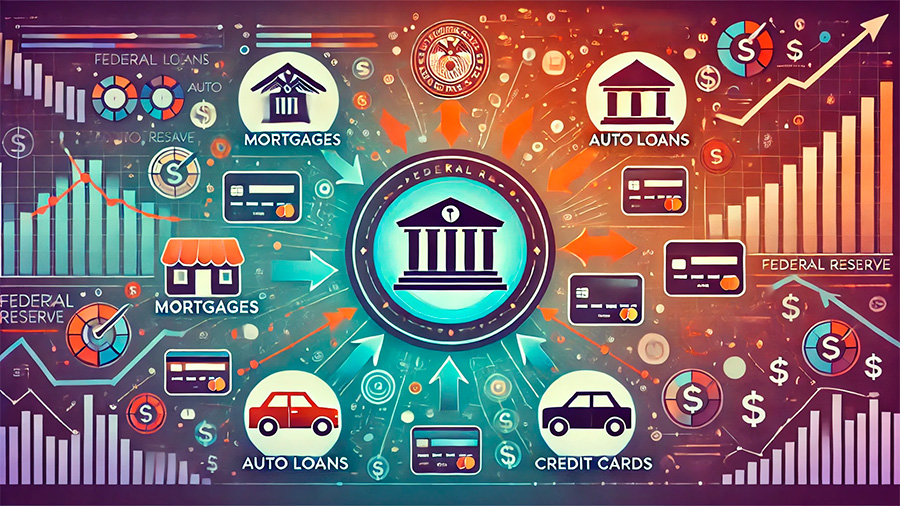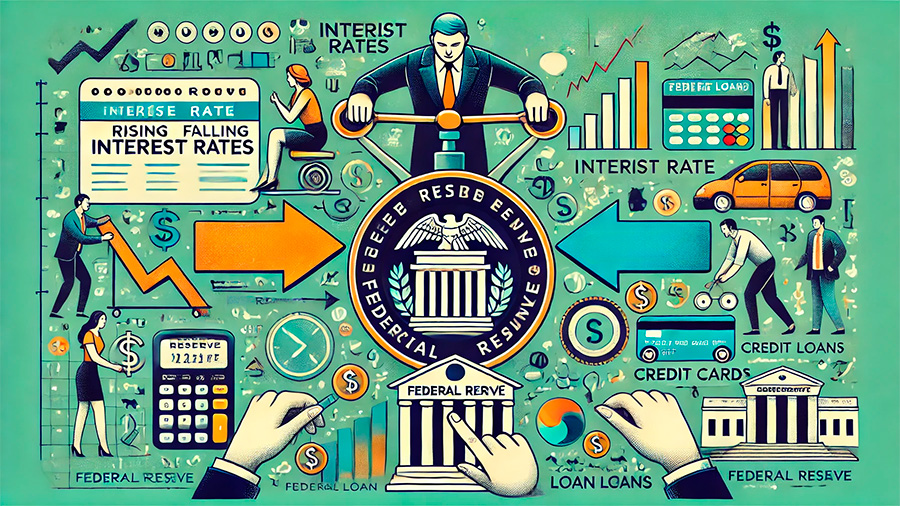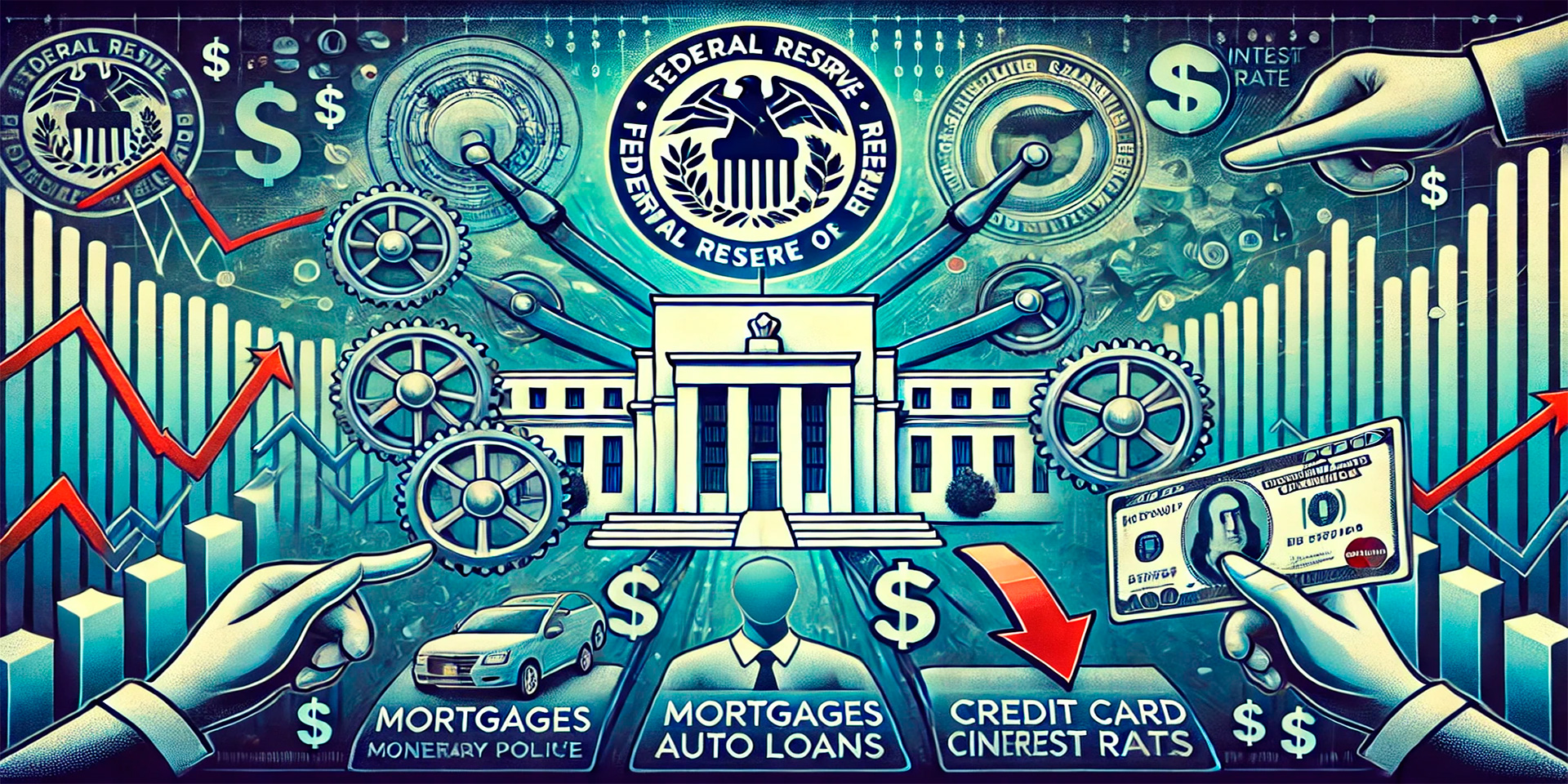How the Federal Reserve Impacts Your Loan Costs: A Guide for Consumers
The Federal Reserve, often referred to as “the Fed,” plays a crucial role in the U.S. economy by managing monetary policy. One of the most significant ways the Fed affects the financial lives of everyday Americans is through its influence on consumer loan costs. From mortgages to auto loans and credit card interest rates, the Fed’s decisions on interest rates directly impact how much consumers pay to borrow money.
Understanding how the Fed shapes loan costs is essential for anyone who relies on credit to make large purchases or manage debt. The decisions made by the Federal Reserve affect not only the broader economy but also your personal finances. This article will explain the Fed’s role in determining loan costs, how its actions trickle down to consumers, and what you can do to navigate changes in interest rates.
What Is the Federal Reserve and What Does It Do?
The Federal Reserve is the central banking system of the United States, responsible for regulating the country’s monetary policy. It was created to stabilize the economy, manage inflation, and promote employment. The Fed has several tools at its disposal to achieve these goals, with one of the most important being its ability to set interest rates.
1. The Federal Funds Rate
The primary way the Fed influences consumer loan costs is through the federal funds rate, which is the interest rate that banks charge each other for overnight loans. While this rate doesn’t directly determine consumer interest rates, it sets the baseline for borrowing costs throughout the economy.
- Impact on banks: When the federal funds rate rises, it becomes more expensive for banks to borrow money. In turn, banks pass these higher costs on to consumers by raising the interest rates on loans, credit cards, and mortgages.
- Fed rate cuts: Conversely, when the Fed lowers the federal funds rate, it becomes cheaper for banks to borrow money, and they typically reduce the interest rates they charge consumers.
The federal funds rate is the foundation of how the Fed controls the overall cost of borrowing, and its changes ripple throughout the economy, affecting everything from mortgage rates to credit card APRs.
2. Open Market Operations
Another key tool the Federal Reserve uses to influence interest rates is open market operations. This involves the buying and selling of government securities, such as Treasury bonds, in the open market.
- Buying securities: When the Fed buys government securities, it injects money into the economy, increasing the supply of money available for banks to lend. This tends to lower interest rates, making loans cheaper for consumers.
- Selling securities: Conversely, when the Fed sells securities, it pulls money out of the financial system, reducing the money supply. This can lead to higher interest rates, making borrowing more expensive.
By controlling the money supply through open market operations, the Fed can directly impact interest rates and influence the cost of consumer loans.

How the Fed’s Actions Affect Consumer Loans
The decisions made by the Federal Reserve have a direct and immediate effect on various types of consumer loans. While the Fed doesn’t set the interest rates for these loans directly, its actions influence how much it costs consumers to borrow money. Here’s how the Fed’s decisions impact different types of consumer loans.
1. Mortgage Rates
Mortgage rates are particularly sensitive to changes in the federal funds rate and the overall direction of Fed policy. When the Fed raises or lowers interest rates, mortgage lenders adjust the rates they offer to borrowers accordingly.
- Rising rates: When the Fed increases the federal funds rate, mortgage rates typically rise as well. This means that homebuyers will face higher monthly payments, making homes less affordable. Even small increases in mortgage rates can have a significant impact on the total cost of a mortgage over its lifetime.
- Falling rates: When the Fed lowers interest rates, mortgage rates tend to decrease, making it cheaper to buy a home or refinance an existing mortgage. This often leads to increased home buying activity as borrowing becomes more affordable.
For homeowners and prospective buyers, understanding how the Fed’s decisions impact mortgage rates is crucial for timing decisions on purchasing or refinancing a home.
2. Auto Loans
Auto loan interest rates are also influenced by the Fed’s monetary policy, though not as directly as mortgage rates. Banks and credit unions adjust their lending rates for car loans based on changes in the federal funds rate.
- Higher borrowing costs: When the Fed raises interest rates, car loan rates typically follow, making auto financing more expensive. Consumers may need to shop around for the best rates or consider larger down payments to reduce the total cost of the loan.
- Lower rates: When the Fed cuts interest rates, auto loans become more affordable, encouraging more consumers to buy cars. Lower rates can also lead to increased competition among lenders, which may result in better financing options for consumers.
By paying attention to Fed policy, car buyers can anticipate changes in auto loan rates and make more informed decisions when financing a vehicle.
3. Credit Card Interest Rates
Credit card interest rates, known as annual percentage rates (APRs), are closely tied to the federal funds rate. Most credit cards have variable APRs, meaning that their interest rates move up or down in response to changes in the broader interest rate environment.
- Higher APRs: When the Fed raises interest rates, credit card APRs tend to rise, making it more expensive for consumers to carry a balance. Higher rates mean that consumers pay more in interest charges if they don’t pay off their balances in full each month.
- Lower APRs: When the Fed lowers interest rates, credit card APRs generally decrease, making it slightly less costly for consumers to carry debt. However, the reduction in credit card rates is often less dramatic than other types of loans.
Because credit card interest rates are directly linked to the federal funds rate, keeping an eye on Fed decisions can help consumers manage their credit card debt more effectively.
4. Personal Loans
Personal loans, which are often used for consolidating debt or financing large purchases, are also affected by the Fed’s interest rate policies. Lenders adjust their personal loan rates in response to changes in the federal funds rate.
- Increased loan costs: When the Fed raises rates, personal loan interest rates tend to go up as well, making it more expensive to borrow for things like home improvements, medical expenses, or debt consolidation.
- Lower loan costs: Conversely, when the Fed lowers rates, personal loans become cheaper, providing consumers with an opportunity to refinance or take out new loans at lower interest rates.
For borrowers, understanding how the Fed’s actions impact personal loan rates can help with decisions around debt consolidation or financing major expenses.

Strategies for Navigating Changing Interest Rates
Since the Federal Reserve’s decisions can significantly impact the cost of borrowing, it’s important for consumers to be prepared for changes in interest rates. Here are some strategies to help navigate rising or falling rates.
1. Refinance Loans During Rate Cuts
When the Fed lowers interest rates, it creates opportunities for consumers to refinance existing loans at lower rates. This is particularly beneficial for mortgage holders or anyone with large personal loans.
- Mortgage refinancing: If mortgage rates drop significantly after you’ve taken out a home loan, refinancing can help you secure a lower interest rate and reduce your monthly payments. Even a slight reduction in your rate can save you thousands of dollars over the life of the loan.
- Auto loan refinancing: You may also want to consider refinancing your car loan if interest rates decrease. A lower rate could reduce your monthly payments and save you money on interest over time.
Refinancing during periods of lower interest rates allows you to lock in better terms and reduce your borrowing costs.
2. Pay Down Debt When Rates Are Rising
When the Fed raises interest rates, the cost of carrying debt increases. This is especially true for credit card balances, which tend to have variable rates that rise with the federal funds rate.
- Focus on high-interest debt: As rates rise, prioritize paying off high-interest debt, such as credit cards, to avoid escalating interest charges. Paying off or reducing these balances can save you money and improve your financial stability.
- Lock in fixed rates: If you’re considering a large purchase or need a personal loan, it may be a good idea to lock in a fixed-rate loan before rates rise further. This way, you can avoid the impact of rising rates on your future borrowing costs.
Proactively paying down debt or locking in fixed rates can help you manage your finances more effectively during periods of rising interest rates.
3. Use Variable-Rate Loans Wisely
While variable-rate loans, such as adjustable-rate mortgages (ARMs), may offer lower initial rates, they can become more expensive if the Fed raises interest rates. Consumers with variable-rate loans need to be aware of how their payments could increase over time.
- Consider refinancing to a fixed rate: If you currently have a variable-rate loan and anticipate rising rates, consider refinancing to a fixed-rate loan to lock in more predictable payments.
- Plan for rate changes: If you prefer the flexibility of a variable-rate loan, make sure to budget for potential rate increases in the future. Be prepared for fluctuations in your monthly payments as interest rates change.
Understanding the risks associated with variable-rate loans can help you avoid unexpected increases in your borrowing costs.
Final Thoughts: The Fed’s Role in Shaping Loan Costs
The Federal Reserve plays a central role in determining the cost of borrowing for consumers by controlling the federal funds rate and managing the money supply through open market operations. Whether you’re planning to buy a home, finance a car, or manage credit card debt, the Fed’s decisions on interest rates will have a direct impact on the cost of your loans.
By understanding how the Fed’s actions influence mortgage rates, auto loans, credit cards, and personal loans, you can make more informed financial decisions. Whether it’s refinancing during a period of lower rates or paying off high-interest debt when rates are rising, staying attuned to Fed policy can help you navigate the ever-changing landscape of consumer borrowing and protect your financial future.

